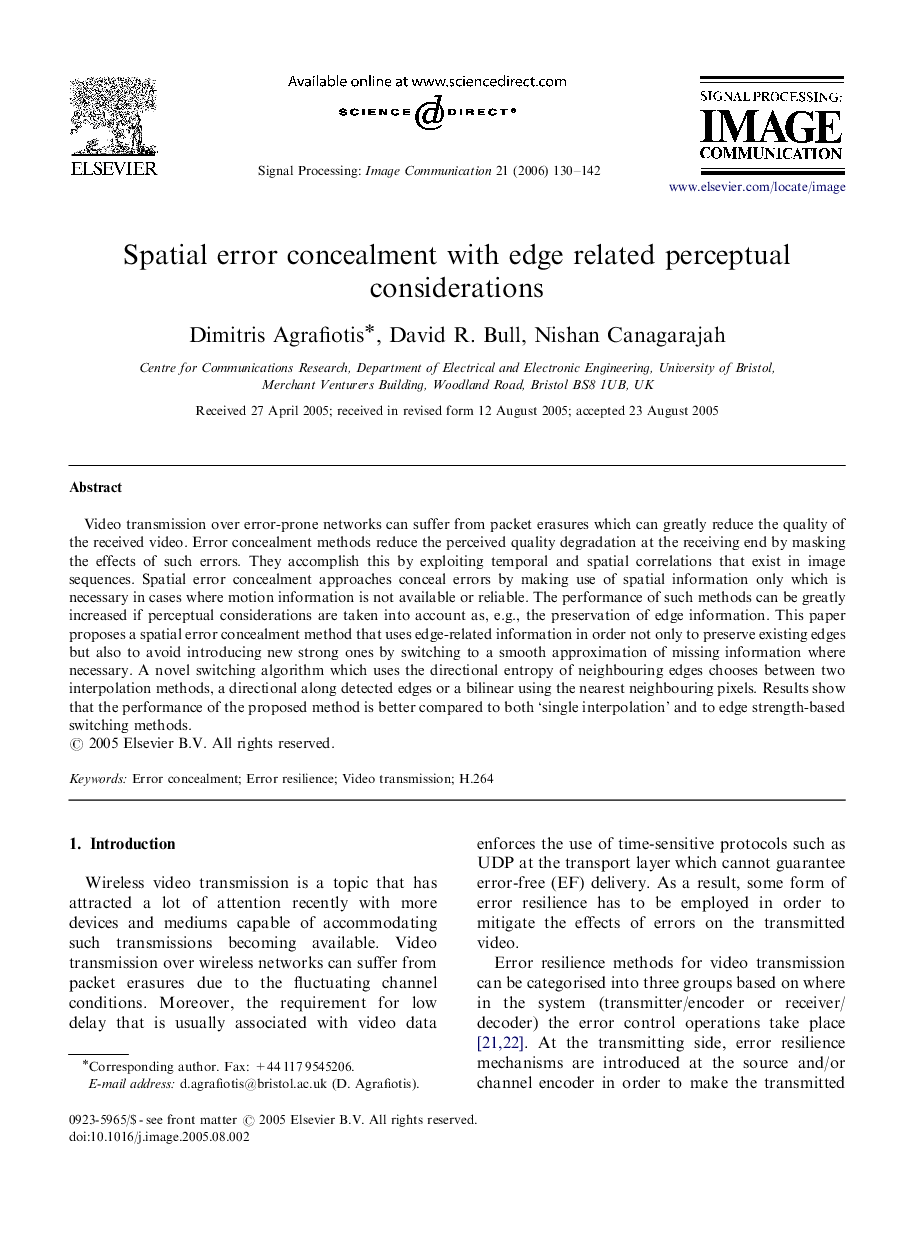| Article ID | Journal | Published Year | Pages | File Type |
|---|---|---|---|---|
| 537141 | Signal Processing: Image Communication | 2006 | 13 Pages |
Video transmission over error-prone networks can suffer from packet erasures which can greatly reduce the quality of the received video. Error concealment methods reduce the perceived quality degradation at the receiving end by masking the effects of such errors. They accomplish this by exploiting temporal and spatial correlations that exist in image sequences. Spatial error concealment approaches conceal errors by making use of spatial information only which is necessary in cases where motion information is not available or reliable. The performance of such methods can be greatly increased if perceptual considerations are taken into account as, e.g., the preservation of edge information. This paper proposes a spatial error concealment method that uses edge-related information in order not only to preserve existing edges but also to avoid introducing new strong ones by switching to a smooth approximation of missing information where necessary. A novel switching algorithm which uses the directional entropy of neighbouring edges chooses between two interpolation methods, a directional along detected edges or a bilinear using the nearest neighbouring pixels. Results show that the performance of the proposed method is better compared to both ‘single interpolation’ and to edge strength-based switching methods.
